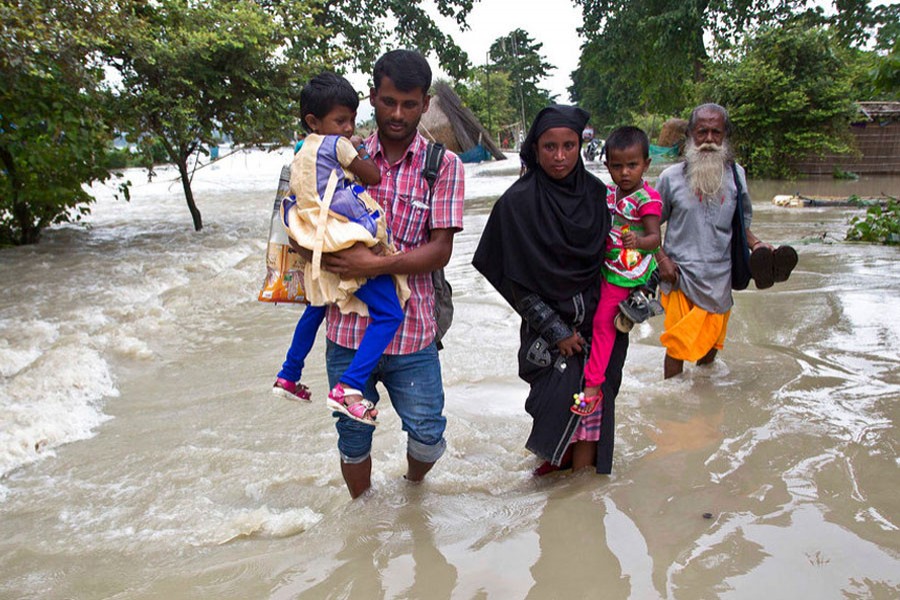Heavy rainfall, flooding and landslides across three countries in South Asia - Bangladesh, India and Nepal - have killed at least 93 children, and put the lives of millions more at risk.
UNICEF estimates that more than 12 million people, including about five million children, have been affected.
In Bangladesh, monsoon rains continue to affect most of the country, particularly the central-northern and south-east regions.
More than two million people have been affected by flooding, including around 700,510 children, according to UNICEF.
An estimated 367,341 houses have been damaged or destroyed and 1,866 primary and community schools have been damaged by floodwaters.
Cox's Bazar, home to more than a million Rohingyas, has been hit by excessive rain this month.
"Millions of children have seen their lives turned upside down by the torrential rainfall, flooding and landslides," said Jean Gough, UNICEF Regional Director for South Asia, reports UNB.
"As the rains continue, these numbers are only likely to grow. UNICEF is responding urgently, working with local authorities and partners to ensure children are kept safe, and provide the support needed," she added.
While many areas remain inaccessible due to damage to roads, bridges and railways, the most urgent needs for children are clean water, hygiene supplies to prevent the spread of disease, food supplies and safe places in evacuation centres for children to play.
UNICEF is on the ground working in close coordination with respective governments and humanitarian partners from the three countries to scale up its responses and respond to the immediate needs of affected children and their families.
In India, more than 10 million people have been affected across Assam, Bihar, parts of Uttar Pradesh and other north-eastern states, including more than 4.3 million children.
As the situation develops, these numbers are only likely to increase.
In Assam alone, almost 2,000 schools have been damaged by floodwaters. While parts of the country have been suffering from heavy rainfall and flooding, other parts are still reeling from the aftermath of severe heat and water deficit, affecting almost half of the country.
In Nepal, some 68,666 people are temporarily displaced, including 28,702 children. A total of 88 people have died, including 47 children (15 girls and 32 boys).
Around 31 people are missing while 41 have been injured, according to the latest reports from the government of Nepal.
Nearly 12,000 households have been temporarily displaced in central and eastern Nepal.
However, many affected families have started going back home since the rains have decreased and water level receded.
"Across the region, we are seeing the devastating impact of extreme weather events on children and families," said Gough.
"As weather events become more extreme, unpredictable and erratic, it is children who are paying the heaviest price."
While individual extreme weather events cannot specifically be attributed to climate change, the increasing frequency and severity of extreme weather - including recent high temperatures, intense rains and slow-moving weather fronts - are in line with predictions of how human activities are affecting the global climate.
Such events can cause death and devastation and can also contribute to the increased spread of major killers of children, such as malnutrition, malaria and diarrhoea.
And as these extreme climate events increase in frequency and magnitude, the risks to children will likely outpace global capacity to mitigate them as well as to provide humanitarian response.
Floods threaten children's survival and development, with direct impacts including injuries and death by drowning. Beyond these immediate risks, floods compromise safe water supplies and damage sanitation facilities, increasing the risk of diarrhoea and other disease outbreaks, as well as impacting children's access to education.
Damage to housing endangers children's well-being, particularly when emergency shelter is either scarce or inadequate.
It also destroys infrastructures, making it difficult to move lifesaving assistance where needed.


